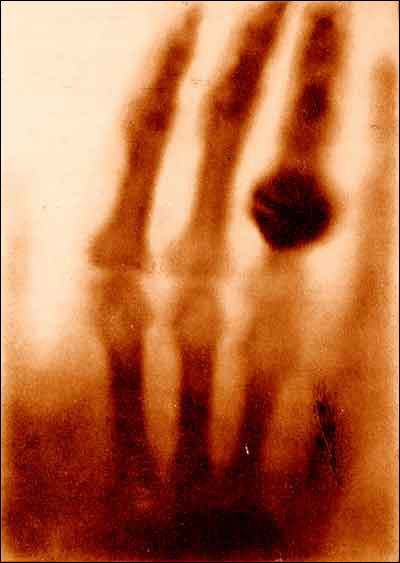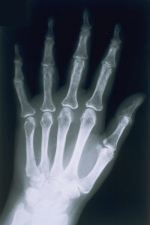
|
|
|
Physics & the Detection of Medical X-Rays
Detection Issues
X-rays can travel through a large amount of material without interacting with the matter in the material. This property makes x-rays a valuable tool for diagnosing problems within the body. Of course, to be useful the x-rays must create some type of picture which physicians can see and interpret. From the time that Röntgen recorded the first x-ray picture until now, the primary recording medium has been film. Thus, we are presented with a small paradox. We need radiation that will travel through various densities found in the human body, yet we need that same radiation to interact with the molecules in a piece of film.
| Röntgen's solution was to expose the person and the film for a very long time. For the picture of his wife's Röntgen exposed the film (and his wife) to x-rays for 15 minutes. this procedure was certainly not healthy for Mrs. Röntgen or for anyone else in the laboratory at the time. |
|
Today, an x-ray of much higher quality would require a fraction of a second to produce. Because of the short exposure times, the patient and the technicians who are operating the machines are not exposed to dangerous radiation. The changes over the past century are the result the application of basic principles of physics. |
|
In addition, methods of creating images with using film are now readily available and relatively easy to use. These methods involve other principles of physics, some of which have been discovered since Röntgen's time. With all of them the physician obtains high quality, high resolution images with very small exposures to the radiation. Thus, by applying physical principles scientists have created a safe and effective diagnostic tool from a potentially dangerous discovery.
X-ray dose concept and reduction measures
Introduces the concept of dose and discusses in general ways to reduce it.
We have not found general web sites which discuss this issue. Most of them are related to a specific procedure or method and will appear on the pages about the physics involved in detecting low intensity x-rays.
|
|






